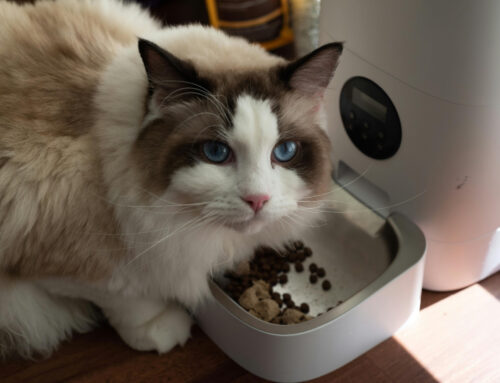Choosing the best dog food for your furry companion can be a challenge. With so many options available—dry kibble, homemade meals, and raw diets—each type has its benefits and considerations. In this guide, we’ll explore top dry dog food brands, homemade dog food recipes, the pros and cons of a raw diet, and the best options for dogs with allergies.
Nutritional Needs of Dogs
Before diving into the different types of dog food, it’s essential to understand what nutrients your dog needs. Dogs require a balanced diet that includes:
- Proteins: Essential for muscle growth and repair. Good sources include chicken, beef, lamb, fish, and eggs.
- Fats: Provide energy and support cell function. Look for sources like fish oil, chicken fat, and flaxseed oil.
- Carbohydrates: Offer energy and aid digestion. Sources include sweet potatoes and whole grains.
- Vitamins and Minerals: Crucial for overall health. Ensure the food contains vitamins A, B, C, D, E, and minerals like calcium, zinc, and phosphorus.
Dry Dog Food
Dry dog food, or kibble, is a popular choice due to its convenience and long shelf life. Here are some top-rated dry dog food brands:
- Diamond Naturals
Diamond Naturals is highly recommended for its quality ingredients and affordability. The Adult Lamb Meal and Rice formula includes lamb meal, rice, and barley, providing a balanced diet with 26% protein and 16% fat (Dog Food Advisor). - Taste of the Wild
Taste of the Wild’s Pacific Stream formula is grain-free and rich in protein sources like salmon and ocean fish meal. It’s excellent for dogs with food sensitivities and provides a balanced diet with 28% protein and 17% fat (Dog Food Advisor). - American Journey
American Journey’s Grain-Free Chicken and Turkey Recipe is another top choice. It’s high in protein (41%) and fat (27%), making it suitable for active dogs. It’s also free from cheap fillers, ensuring quality nutrition (Dog Food Advisor). - Dr. Tim’s Pursuit
Dr. Tim’s Pursuit Active Dog formula is known for its high protein content (33%) from chicken meal and its inclusion of wholesome grains like brown rice and oats. It’s a great option for active and working dogs (Dog Food Advisor).
Homemade Dog Food
Making homemade dog food allows you to control the ingredients your dog consumes. Here are some tips for preparing homemade meals:
Balanced Recipes
Ensure your recipes are balanced. Consult with a veterinarian or pet nutritionist to create meals that meet your dog’s nutritional needs. A basic recipe might include:
-
- Protein: Lean meats like chicken, beef, or turkey.
- Carbs: Brown rice, quinoa, or sweet potatoes.
- Vegetables: Carrots, broccoli, or zucchini.
- Fats: Fish oil or olive oil.
Adding Essential Vitamins and Supplements
Incorporate vitamins and supplements into homemade dog food to ensure your pet receives all necessary nutrients. One reliable product is Balance IT, which helps complete homemade dog diets. Always follow the recommended dosage based on your dog’s weight and dietary requirements.
Important supplements might include:
-
- Calcium: Essential for bone health, can be added through powdered eggshells.
- Fish Oil: Rich in omega-3 fatty acids, supports skin and coat health.
- Probiotics: Aid in digestion and promote a healthy gut.
Avoid Harmful Foods
Some foods are toxic to dogs and should be avoided, including onions, garlic, chocolate, grapes, and raisins.
Recipes and Tips
Here are some detailed recipes and tips for making homemade dog food:
-
- Chicken and Rice Recipe
- Ingredients: Boiled chicken breast, brown rice, carrots, green beans.
- Instructions: Cook rice and mix with shredded chicken and steamed vegetables. Cool before serving.
- Nutritional Benefits: High in protein and carbohydrates, easy to digest.
- Chicken and Rice Recipe
-
- Beef and Sweet Potato Recipe
- Ingredients: Ground beef, sweet potatoes, green beans, spinach.
- Instructions: Brown the beef, cook and mash sweet potatoes, mix with chopped green beans and spinach. Cool before serving.
- Nutritional Benefits: Rich in protein, vitamins A and C, and fiber.
- Beef and Sweet Potato Recipe
-
- Fish and Quinoa Recipe
- Ingredients: Cooked salmon, quinoa, broccoli, carrots.
- Instructions: Cook quinoa, mix with flaked salmon and steamed vegetables. Cool before serving.
- Nutritional Benefits: High in omega-3 fatty acids, protein, and antioxidants.
- Fish and Quinoa Recipe
Additional Homemade Dog Food Tips
-
- Batch Cooking: Consider cooking in large batches and freezing portions to save time.
- Food Safety: Ensure all ingredients are fresh and properly cooked or prepared to avoid health risks.
- Variety: Rotate proteins and vegetables to provide a varied and interesting diet for your dog.
Raw Diet
A raw diet consists of uncooked meats, bones, fruits, and vegetables. It’s based on the idea that dogs will benefit from eating what their ancestors ate in the wild. Here are some pros and cons:
Pros:
- Nutrient-Rich: Raw diets can be high in proteins and nutrients that might be lost during cooking.
- Health Benefits: Many dog owners report shinier coats, healthier skin, and improved energy levels.
Cons:
- Bacterial Risk: Raw meats can harbor harmful bacteria like Salmonella and E. coli, posing a risk to both dogs and humans.
- Nutritional Imbalance: Without proper planning, raw diets can lack essential nutrients, leading to health issues over time.
Top Raw Dog Food Brands
For those interested in raw diets but prefer the convenience of pre-made options, consider these top brands:
- Primal Pet Foods
Primal Pet Foods offers a range of raw options, including frozen and freeze-dried formulas. Their recipes are balanced and made with high-quality ingredients like organic vegetables and human-grade meats (Primal Pet Foods). - Stella & Chewy’s
Stella & Chewy’s is well-known for its freeze-dried raw foods. Their meals are high in protein and made from responsibly sourced meats, ensuring your dog gets a nutritious diet without the hassle of preparing raw food at home (Stella & Chewy’s). - Instinct Raw
Instinct Raw provides a variety of raw food options, from frozen bites to raw-boost mixers. Their formulas are crafted with real meats and organic produce, offering a balanced and convenient raw diet for dogs (Instinct Raw).
Using Toppers on Kibble
Toppers can enhance the nutritional value and flavor of dry kibble, making mealtime more enjoyable for your dog. Here’s how to use toppers effectively:
Raw Toppers
-
- Types: Raw toppers often include freeze-dried or dehydrated meats, organs, and bones. They can be a good source of additional protein and nutrients.
- Benefits: Adding raw toppers can boost the nutritional profile of kibble, adding variety and flavor.
- How to Use: Sprinkle or mix raw toppers with your dog’s regular kibble. Start with a small amount to ensure your dog’s digestive system adjusts well.
Homemade Toppers
-
- Types: Homemade toppers might include cooked meats, vegetables, or broths. They can be a nutritious addition to kibble.
- Benefits: Homemade toppers allow you to control the ingredients and provide fresh, wholesome additions to your dog’s diet.
- How to Use: Prepare toppers in advance and store them in the refrigerator or freezer. Add a small portion to your dog’s kibble to enhance flavor and nutrition.
Commercial Toppers
-
- Types: Commercial toppers come in various forms such as powders, pouches, or freeze-dried cubes. They are designed to complement kibble and often contain added vitamins and minerals.
- Benefits: Commercial toppers are convenient and often specifically formulated to provide balanced nutrition.
- How to Use: Follow the package instructions for serving sizes and mixing. Ensure the topper complements your dog’s overall diet and doesn’t exceed recommended daily nutrient limits.
Dog Food for Allergies
Dogs, like humans, can suffer from food allergies. Identifying the right food for an allergic dog can significantly improve their health and quality of life. Here are some considerations and top recommendations for dogs with allergies:
Common Allergens
Common allergens in dog food include:
-
- Beef
- Dairy
- Wheat
- Chicken
- Eggs
- Lamb
- Soy
Symptoms of Food Allergies
Symptoms of food allergies in dogs can include:
-
- Itchy Skin: Redness, rashes, and constant scratching.
- Digestive Issues: Vomiting, diarrhea, or gas.
- Ear Infections: Frequent ear scratching or shaking.
- Hair Loss: Bald spots or thinning fur.
Hypoallergenic Dog Food
Hypoallergenic dog foods are specially formulated to avoid common allergens and often use novel protein sources and easily digestible ingredients. Here are some top brands:
-
- Hill’s Prescription Diet d/d
Hill’s d/d formula is designed for dogs with food sensitivities. It uses novel proteins like venison or duck and avoids common allergens. It’s highly digestible and helps maintain healthy skin and coat (Hill’s Prescription Diet). - Royal Canin Hydrolyzed Protein
Royal Canin’s hydrolyzed protein dog food is crafted with proteins broken down into tiny particles, making it less likely to trigger an allergic reaction. It’s suitable for dogs with severe allergies and helps support digestive health (Royal Canin). - Blue Buffalo Basics Limited Ingredient Diet
Blue Buffalo’s Basics line uses limited ingredients to minimize the risk of allergies. Their Grain-Free Turkey and Potato Recipe is a popular choice, offering a single protein source and easily digestible carbohydrates (Blue Buffalo).
- Hill’s Prescription Diet d/d
Homemade Allergy-Friendly Recipes
Making homemade food for allergic dogs can be a safe and effective way to control their diet. Here are some allergy-friendly recipes:
-
- Turkey and Quinoa Recipe
- Ingredients: Ground turkey, quinoa, zucchini, carrots.
- Instructions: Cook quinoa, brown the turkey, and mix with steamed zucchini and carrots. Cool before serving.
- Nutritional Benefits: High in protein, low in common allergens.
- Turkey and Quinoa Recipe
-
- Duck and Sweet Potato Recipe
- Ingredients: Duck breast, sweet potatoes, green beans.
- Instructions: Cook and mash sweet potatoes, bake or grill duck breast, and mix with chopped green beans. Cool before serving.
- Nutritional Benefits: Rich in novel protein and vitamins.
- Duck and Sweet Potato Recipe
-
- Fish and Pumpkin Recipe
- Ingredients: Whitefish, pumpkin puree, spinach.
- Instructions: Cook fish, mix with pumpkin puree and chopped spinach. Cool before serving.
- Nutritional Benefits: High in omega-3 fatty acids, fiber, and antioxidants.
- Fish and Pumpkin Recipe
Conclusion
Choosing the best dog food requires understanding your dog, their nutritional needs, and considering the pros and cons of different food types. Whether you opt for high-quality dry kibble, homemade meals, or a raw diet, ensure it provides a balanced diet rich in proteins, fats, carbohydrates, vitamins, and minerals.
Remember, each dog is unique, and what works for one might not work for another. Always consult with your veterinarian before making significant changes to your dog’s diet. For more information and detailed reviews, check out resources like Dog Food Advisor.




